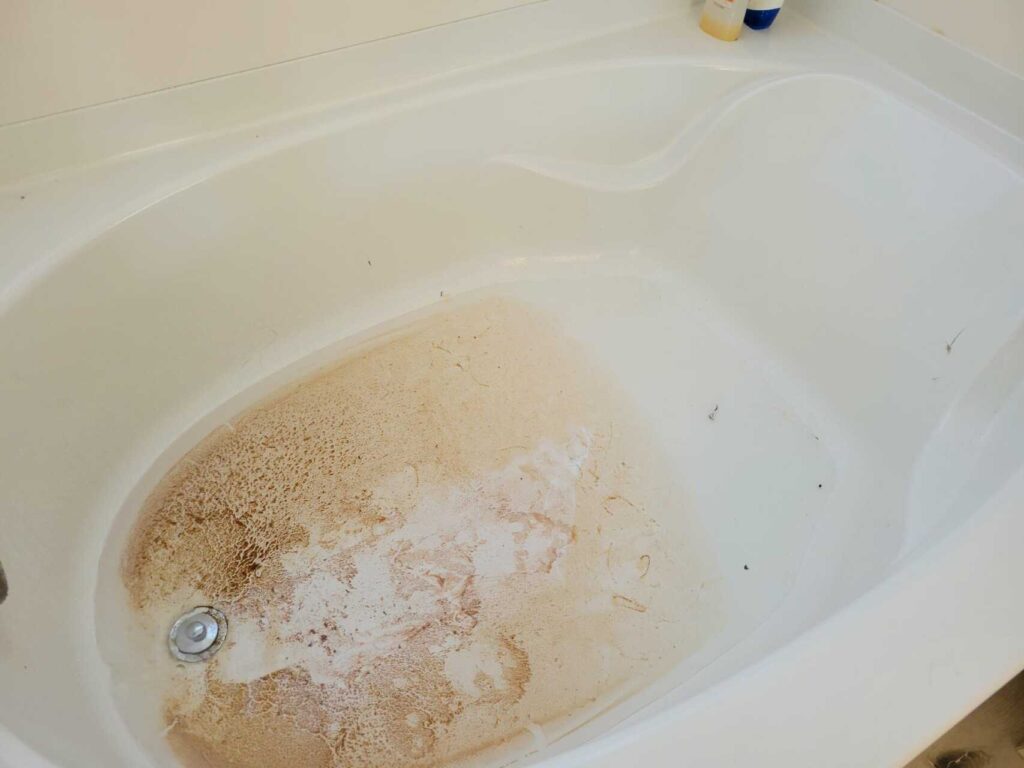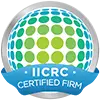
Contents
Imagine the foul stench and murky waters creeping into your home, threatening your health and property. When a sewage backup strikes, the chaos can be overwhelming, but knowing how to respond can make a significant difference. From ensuring your safety with proper gear to understanding the step-by-step cleanup process, each action you take is essential. Let’s explore how you can effectively manage this intimidating situation and protect your home.
Key Takeaways
- Wear appropriate personal protective equipment to safeguard against pathogens during sewage cleanup.
- Shut off utilities before starting the cleanup process to prevent further hazards.
- Use pumps to extract standing water, followed by thorough cleaning with soap and disinfectants.
- Replace porous materials that cannot be adequately sanitized to ensure safety and hygiene.
- Consult professionals for extensive flooding or persistent odors to assess hidden damages and health risks.
Understanding Sewage Backup Causes
When you experience a sewage backup, it’s crucial to understand the underlying causes to effectively address the issue. Sewage system failures often stem from various factors, including aging infrastructure, improper installation, or excessive rainfall. These vulnerabilities can lead to drainage blockages, which prevent wastewater from flowing correctly.
Tree roots invading pipes, grease buildup, and foreign objects can exacerbate these problems, creating significant hurdles for your sewage system. Recognizing these potential causes helps you take proactive measures to prevent future incidents.
Moreover, you’re not alone in facing these challenges; many property owners encounter similar issues. By acknowledging the technical aspects of sewage backup, you can foster a sense of community and shared experience.
Understanding these causes empowers you to make informed decisions, ensuring your home remains a safe and functional space.
Safety Precautions Before Cleanup
Before you start cleaning up a sewage backup, it’s essential to prioritize your safety.
Equip yourself with appropriate personal protective equipment, like gloves and masks, to guard against harmful pathogens.
Additionally, isolate the affected area to prevent further exposure and stay informed about potential health hazards related to contaminated materials.
Personal Protective Equipment
Sewage cleanup presents significant health risks, making personal protective equipment (PPE) essential for your safety.
To protect yourself, wear appropriate protective gear, including gloves, boots, and face masks designed for biohazard situations. Confirm your gloves are durable and extend past your wrists to prevent exposure. Waterproof boots should have slip-resistant soles to maintain stability on wet surfaces. A mask with a proper seal will shield you from harmful pathogens and odors.
Follow safety guidelines closely; they’re not just recommendations but vital measures to keep you healthy. Recognizing the risks involved shows your commitment to safety for both yourself and your loved ones.
Area Isolation Measures
Ensuring the area is isolated from the rest of your home is a critical step in the cleanup process. Begin with a thorough area assessment to identify affected zones. Use effective containment strategies to prevent further contamination. Here’s a quick reference table:
| Measure | Purpose | Action Required |
|---|---|---|
| Block Entry | Prevent unauthorized access | Seal doors and windows |
| Use Warning Signs | Alert others | Place signs around area |
| Remove Personal Items | Limit exposure | Safely store belongings |
| Control Airflow | Minimize odor spread | Close vents and doors |
| Establish Cleaning Zones | Organize cleanup | Designate specific areas |
Health Hazard Awareness
How can you stay safe while tackling a sewage backup? Understanding the health risks associated with sewage is vital. Contamination sources can harbor dangerous pathogens, so you need to take safety precautions seriously.
Here are some essential steps to ensure your well-being:
Wear protective gear: gloves, masks, and goggles are a must.
Ventilate the area: open windows and doors to improve air circulation.
Avoid direct contact: keep your skin away from contaminated surfaces.
Disinfect thoroughly: use appropriate cleaning solutions to eliminate pathogens.
Essential Tools and Supplies for Cleanup
When tackling a sewage backup, having the right tools and supplies is essential for your safety and effectiveness.
You’ll need personal protective equipment, like gloves and masks, to shield yourself from harmful pathogens.
Additionally, a range of cleaning and disinfecting supplies will help ensure that the area is thoroughly sanitized and safe for use once again.
Personal Protective Equipment
While tackling a sewage backup can be intimidating, having the right personal protective equipment (PPE) is crucial for your safety.
Proper protective gear adheres to safety standards and ensures you feel secure while handling hazardous materials.
Here’s what you’ll need:
- Nitrile gloves: For a barrier against contaminants.
- Waterproof boots: To keep your feet dry and protected.
- Face mask: To filter out harmful pathogens and odors.
- Goggles: To shield your eyes from splashes.
Wearing this PPE helps you stay safe and reduces the risk of infection or injury.
Cleaning and Disinfecting Supplies
Once you’ve equipped yourself with the right personal protective equipment, it’s time to gather your cleaning and disinfecting supplies to tackle the sewage backup effectively.
You’ll need a variety of disinfectant types, such as bleach solutions or commercial-grade products, to eliminate harmful pathogens. Don’t forget heavy-duty gloves, mops, brushes, and buckets to facilitate your cleaning techniques.
Start by removing any standing water and debris, then scrub surfaces with your chosen disinfectant. Allow it to sit for the recommended time to ensure proper disinfection.
For porous materials, consider replacing them entirely. This meticulous approach protects your space and fosters a sense of community and safety.
You’re not alone in this; many have faced similar challenges and emerged stronger.
Step-by-Step Sewage Cleanup Process
Addressing a sewage backup requires a methodical approach to ensure safety and effective cleanup. Follow this step-by-step process to navigate the situation efficiently:
Ensure Safety: Wear protective gear—gloves, masks, and boots—before entering the affected area.
Shut Off Utilities: Turn off electricity and water to prevent further hazards during cleanup.
Assess the Damage: Identify the extent of the sewage overflow to determine appropriate sewage removal techniques.
Begin Cleanup: Start with water extraction using pumps, followed by thorough cleaning to adhere to your cleanup timeline.
Decontaminating Affected Areas
Decontaminating affected areas after a sewage backup is essential for restoring a safe environment. By employing appropriate decontamination techniques and sanitation methods, you can mitigate health risks effectively. Start by wearing protective gear, including gloves and masks, to prevent exposure to harmful pathogens. Clean all surfaces with soap and water, followed by a disinfectant solution.
Here’s a helpful table outlining key sanitation methods:
| Sanitation Method | Purpose |
|---|---|
| Soap and Water | Initial cleaning of surfaces |
| Disinfectant Solutions | Kill bacteria and viruses |
| Steam Cleaning | Deep clean carpets and upholstery |
| HEPA Vacuuming | Remove contaminated particles |
After cleaning, monitor the area for any lingering odors or moisture. The goal is to ensure every corner is safe for use, allowing you and your loved ones to feel secure in your space once again.
Drying and Airing Out the Space
After thoroughly cleaning and disinfecting the affected areas, drying and airing out the space becomes an essential next step.
Effective moisture removal prevents mold growth and restores a sense of safety in your home.
To achieve ideal drying, consider using these airflow techniques:
- Open windows and doors: This promotes fresh air circulation and helps decrease humidity.
- Utilize fans: Position fans strategically to create cross-ventilation, enhancing airflow.
- Use dehumidifiers: These devices extract moisture from the air, accelerating drying in enclosed spaces.
- Check HVAC systems: Running your heating or air conditioning can also help balance humidity levels.
Inspecting for Structural Damage
While you may have successfully cleaned and dried the affected area, it’s crucial to inspect for any structural damage that could compromise your home’s integrity.
Start by conducting a thorough foundation assessment, looking for cracks, settling, or signs of moisture intrusion. These issues can jeopardize your home’s structural integrity, leading to more significant problems down the line.
Next, examine walls and ceilings for discoloration, warping, or sagging, which can indicate hidden damage.
Pay special attention to areas where sewage may have pooled, as they’re more susceptible to rot and mold.
If you notice any concerning signs, it’s wise to consult with a professional. They can provide a detailed evaluation and recommend the necessary repairs.
Preventive Measures to Avoid Future Backups
To prevent future sewage backups, it’s essential to regularly maintain your plumbing system and be vigilant about potential warning signs.
By taking proactive steps, you can save yourself from the inconvenience and stress of a backup. Here are some effective measures:
- Schedule regular plumbing inspections to identify issues early.
- Practice proper drain maintenance by avoiding pouring grease, food, or non-biodegradable items down the sink.
- Install drain screens to catch debris and prevent clogs.
- Be aware of tree roots, which can intrude on your pipes and cause blockages.
When to Call Professional Cleanup Services
When should you reach out to professional cleanup services after experiencing a sewage backup? If you notice extensive flooding, persistent odors, or visible contaminants, it’s vital to call for help.
A professional assessment can quickly determine the severity of the situation, ensuring your safety and the integrity of your property.
Don’t underestimate the potential health risks associated with sewage; bacteria and pathogens can pose serious threats. If you’re unsure about the extent of the damage, a trained expert can provide a thorough damage evaluation, identifying hidden issues that you might overlook.
Additionally, if you’ve attempted cleanup but the problem persists, it’s time to seek professional assistance. They have the right tools and expertise to address the situation effectively, allowing you to regain peace of mind.
Wrap-Up
Addressing a sewage backup promptly and thoroughly is essential for your property’s safety and integrity. For instance, consider a homeowner who, after a backup, followed all cleaning protocols and avoided costly repairs and health risks. By investing time and effort into proper cleanup and preventive measures, like regular plumbing inspections, you can protect your home and your family. Remember, staying informed and prepared is your best defense against future sewage issues.
Recent Posts
Swift Solutions for Unwanted Waste Woes
Imagine a foul odor creeping through your home, signaling a sewage backup that disrupts your
Why Effective Cleanup Matters for Homeowners
As a homeowner, effective cleanup is essential for protecting your property and maintaining its value.
Top Methods for Home Waste Cleanup
Like a well-prepared firefighter tackling a blaze, you must approach home waste cleanup with strategy




